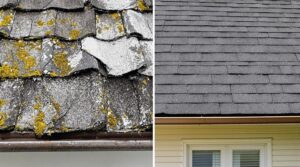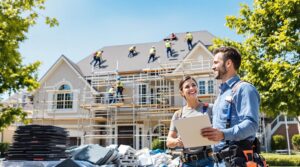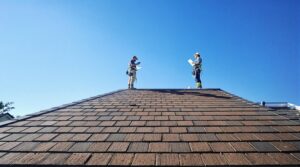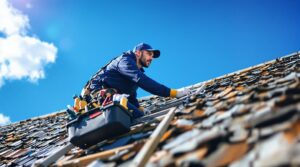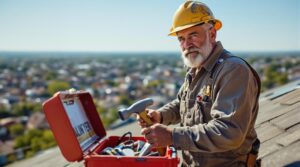Ever wondered how long that rolled roofing will protect your home? Let's break it down!
Most rolled roofing systems give you 5 to 15 years of reliable service, with 10 years being the sweet spot. Think of it like a trusty car – how long it runs depends on how well you treat it and where you drive it.
Want to squeeze more life out of your rolled roofing? Modified bitumen options pack extra punch in the longevity department. They're like the premium version of standard asphalt rolls, engineered to withstand Mother Nature's mood swings.
Your roof's lifespan isn't set in stone, though. Environmental factors, installation expertise, and your maintenance game plan all play crucial roles. It's like maintaining a garden – the more attention you give it, the better it thrives.
Keep your eyes peeled for warning signs that your roof might be crying for help. Cracks sneaking up? Water finding its way inside? Surface looking more like a rocky mountain than a smooth plain? These are your roof's way of waving red flags.
Smart homeowners don't wait for problems to escalate – they partner with roofing pros for regular check-ups. A professional can spot potential issues before they become wallet-draining disasters, helping you time your replacement just right.
Key Takeaways
Want to know the real scoop on rolled roofing lifespan? Let's break it down!
Think of rolled roofing like a trusty pair of work boots – they'll serve you well, but they won't last forever. You're looking at about 15 years of protection, though some might tap out as early as 5 years depending on what Mother Nature throws their way.
Around the 5-year milestone, your roof might start showing its age (just like those creaky knees!). Keep an eye out for telltale signs: cracks sneaking across the surface, pesky blisters bubbling up, and edges that curl like old sandwich bread.
Here's the thing about asphalt rolls – they're like the sprinters of the roofing world, with a 5-10 year run. Compare that to the marathon runners like metal roofing (30-45 years) or PVC systems (20-30 years), and you'll see the difference.
Your roof's enemy list? It's got some heavy hitters: brutal sun rays, temperature swings that would make a thermometer dizzy, and weather that can't make up its mind. These factors are constantly testing your roof's endurance.
But don't worry – you've got some aces up your sleeve! Professional installation is like giving your roof a head start in life, and regular TLC (think annual check-ups and keeping it clear of debris) can help your rolled roofing live its best life. Treat it right, and it'll return the favor by protecting your home longer.
Understanding the Typical Lifespan of Rolled Roofing
Three key factors determine the typical lifespan of rolled roofing: material quality, installation method, and environmental conditions.
On average, rolled roofing materials last approximately 15 years, with visible signs of deterioration typically appearing around the five-year mark.
Lifespan variability exists among different types of rolled roofing, with asphalt roll variants generally lasting between 5-10 years. This shorter duration contrasts with other roofing options like metal (30-45 years) and PVC (20-30 years).
However, proper maintenance can extend the functional life of rolled roofing considerably. Environmental factors, including UV exposure and temperature fluctuations, play vital roles in determining durability.
Professional installation on a properly prepared surface, combined with regular inspections and timely repairs, helps guarantee the roofing system achieves its maximum potential lifespan.
Key Factors That Impact Rolled Roofing Durability

Several major factors greatly influence the durability and performance of rolled roofing systems. Material selection plays a vital role, with modified bitumen offering superior longevity compared to standard options. Environmental impact from UV exposure, extreme temperatures, and precipitation directly affects the degradation rate of roofing materials.
- Quality of materials used in manufacturing
- Local climate conditions and weather exposure
- Installation techniques and roof slope compatibility
- Maintenance frequency and repair response time
- Professional installation by qualified contractors
The combination of proper material selection and installation expertise greatly determines the roofing system's lifespan.
Regular maintenance, timely repairs, and protective coating applications help mitigate environmental impact and extend durability.
Professional inspections guarantee early detection of potential issues, allowing for preventive measures that maximize the roofing system's service life.
Best Practices for Maximizing Rolled Roofing Life
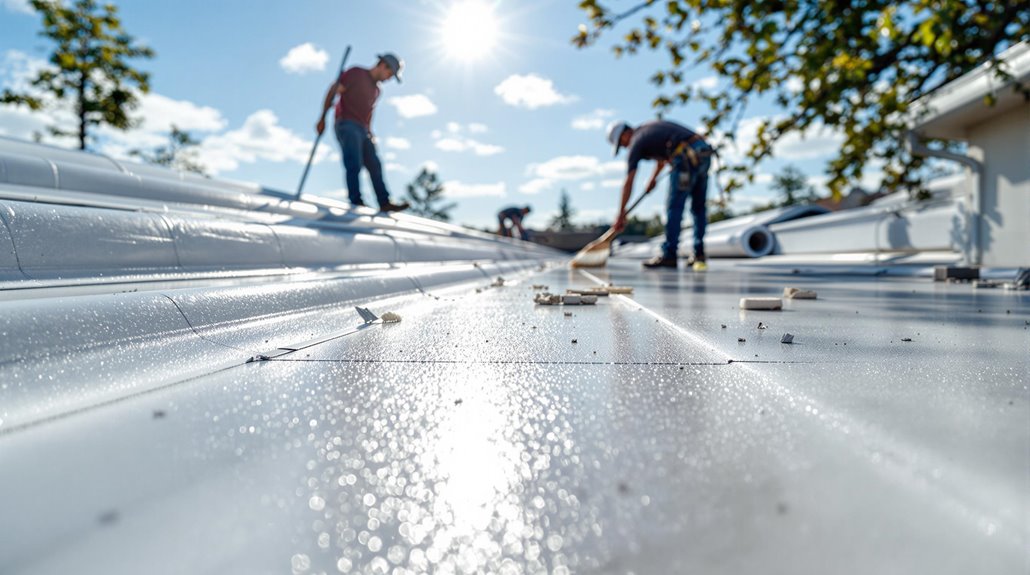
Implementing proven best practices can greatly extend the lifespan of rolled roofing systems beyond their typical service life. Best installation practices include ensuring a clean, dry surface and proper underlayment application, while essential maintenance tips focus on regular inspections and prompt repairs.
| Practice Area | Key Actions |
|---|---|
| Installation | Clean surface preparation, proper adhesive application |
| Maintenance | Regular debris removal, gutter cleaning |
| Inspection | Post-storm checks, annual assessments |
| Repairs | Immediate patching, professional intervention for large issues |
Proper installation sets the foundation for longevity, starting with surface preparation and appropriate underlayment. Regular maintenance, including debris removal and gutter cleaning, prevents moisture-related deterioration. Prompt identification and repair of damage, coupled with seasonal inspections, helps maintain the roof's integrity and extend its functional lifespan.
Common Signs of Rolled Roofing Deterioration
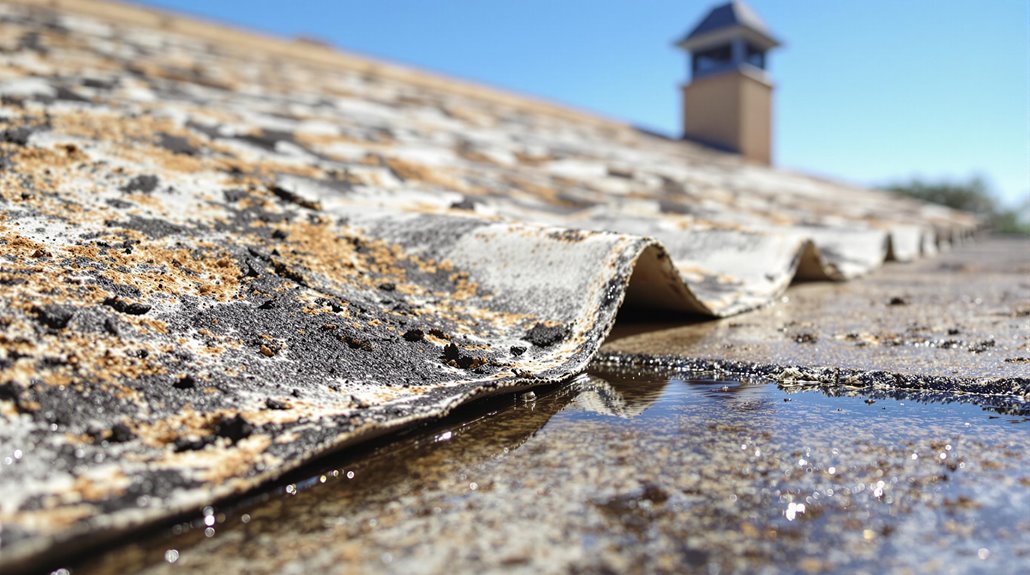
Recognizing the early signs of rolled roofing deterioration enables property owners to address issues before they escalate into costly repairs. Common deterioration causes include environmental factors, structural stress, and poor installation practices. Property owners should monitor their roofing systems for visible damage and implement repair solutions promptly when issues arise.
- Sagging or uneven surfaces indicating moisture penetration and potential structural damage
- Cracks, holes, and blistering in the roofing material
- Mold, mildew, or algae growth signaling moisture infiltration
- Curling or cupping of roofing material edges due to weathering
- Standing water accumulation and inadequate drainage
Regular inspections can identify these warning signs early, particularly around vulnerable areas such as chimneys, vents, and skylights.
Professional assessment is recommended when multiple indicators of deterioration are present, as extensive repairs may be necessary to prevent further damage.
When to Replace Your Rolled Roofing System
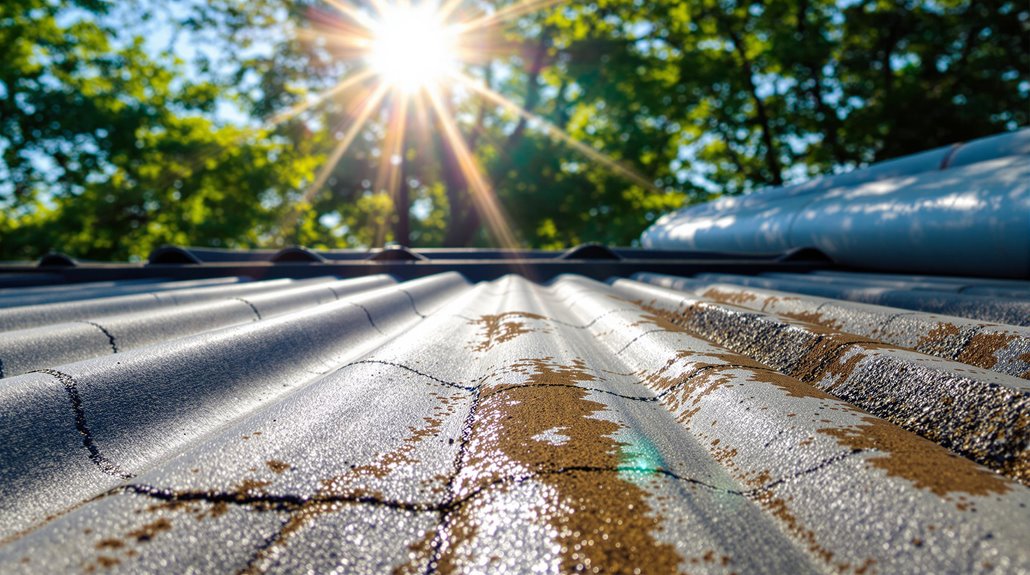
Property owners face three critical decision points when determining if rolled roofing replacement is necessary: age-based assessment, visible deterioration evaluation, and cost-benefit analysis.
The replacement timeline typically falls between 5-15 years, with environmental factors considerably impacting longevity.
When evaluating replacement needs, professionals assess visible deterioration signs, including cracks, leaks, and compromised water-shedding capabilities.
Age-based considerations become paramount as systems approach their expected lifespan, particularly in harsh climates where deterioration accelerates.
The roofing budget should account for both immediate replacement costs and long-term value, factoring in material quality and installation expertise.
Professional installation by licensed contractors guarantees peak performance and warranty coverage, while strategic timing of replacement during off-peak seasons can enhance costs and minimize disruption.
Professional restoration can provide 50-70% cost savings compared to complete replacement while extending the roof's serviceable life.
The Benefits Of Consulting A Public Adjuster
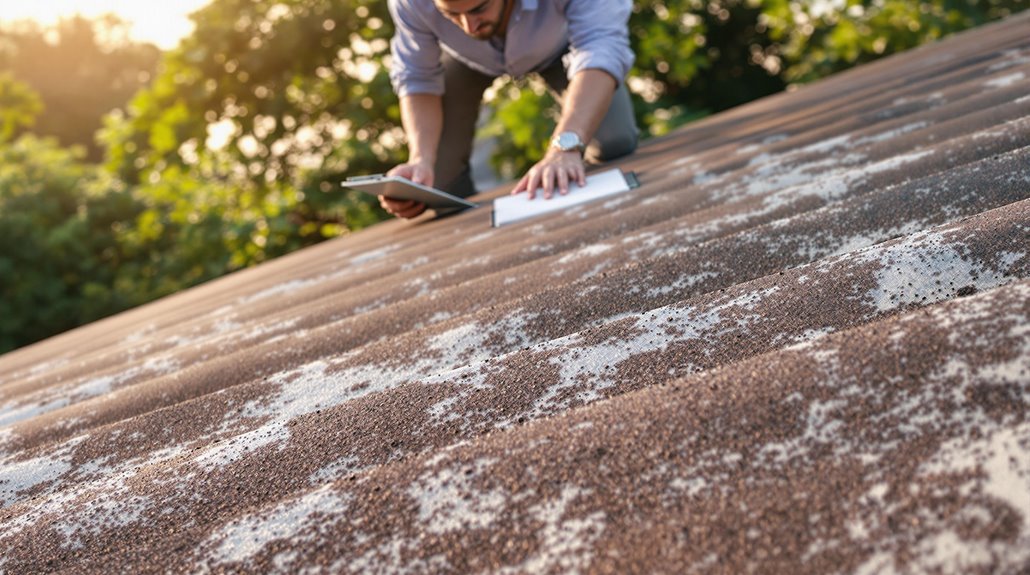
When dealing with rolled roofing damage claims, consulting a public adjuster provides essential expertise in maneuvering complex insurance policies and documenting all damages thoroughly.
These licensed professionals conduct objective damage assessments and handle the entire claims process, removing emotional bias while ensuring maximum coverage under the policy terms.
Public adjusters typically secure higher claim settlements through their industry knowledge and negotiation skills, often working on a contingency basis that aligns with the policyholder's interests.
Claims managed by public adjusters result in 800% higher settlements compared to independently filed claims.
Expertise In Insurance Claims
Insurance claims for rolled roofing damage can be considerably more successful when property owners enlist the expertise of a public adjuster. These professionals excel in insurance policy interpretation and employ proven claims negotiation strategies to maximize settlements. Their extensive understanding of policy fine print, coverage limitations, and valuation methodologies guarantees thorough claim preparation and ideal outcomes.
- In-depth knowledge of Replacement Cost Value (RCV) and Actual Cash Value (ACV) calculations
- Strategic documentation of all eligible damages and repair costs
- Expert negotiation skills to counter insurance company tactics
- Thorough understanding of policy exclusions and limitations
- Efficient management of complex paperwork and claim procedures
Public adjusters streamline the entire claims process while maintaining objectivity, allowing property owners to focus on recovery rather than wrestling with complex insurance procedures.
Their contingency-based services demonstrate their commitment to securing maximum compensation for roofing damage claims.
Storm damage claims require immediate documentation and prompt filing with the insurance company to ensure optimal settlement outcomes.
Objective Damage Assessment
A thorough objective damage assessment conducted by a public adjuster provides property owners with extensive documentation and evaluation of rolled roofing damage.
Through detailed property evaluations, public adjusters identify all covered losses, including subtle damages that might otherwise go unnoticed during standard inspections.
Professional insurance advocacy guarantees that property owners receive maximum settlements by meticulously documenting damages, preparing detailed estimates, and handling claim-related paperwork.
Public adjusters serve as independent advocates, working solely on behalf of policyholders to secure fair compensation. Their expertise in damage assessment helps expedite claims while removing emotional stress from the process.
Operating on a contingency basis, these professionals align their interests with the policyholder's goals, focusing on achieving the best outcomes through thorough documentation and skilled negotiation.
Studies show that property owners who work with public adjusters typically receive 800% higher settlements compared to those who handle claims independently.
Streamlined Claim Process
Property owners who engage public adjusters benefit from a markedly streamlined claims process that reduces administrative burdens while maximizing settlement outcomes. Through efficient negotiations and streamlined documentation procedures, public adjusters accelerate claim resolution while guaranteeing thorough coverage of damages.
Their expertise in policy interpretation and claim management results in faster processing times and reduced likelihood of errors or claim rejections.
- Expedited paperwork handling and documentation management
- Professional negotiation with insurance carriers
- Thorough damage assessment and documentation
- Accelerated settlement timeframes
- Expert guidance throughout claims process
Public adjusters optimize the entire claims workflow, from initial filing through final settlement. Their systematic approach guarantees all necessary documentation is properly prepared and submitted, while their industry knowledge facilitates productive negotiations with insurance carriers.
This all-encompassing management results in improved claim outcomes and reduced stress for property owners.
Through organizations like PCAN's pre-vetted network, property owners can connect with licensed adjusters who maintain rigorous professional standards and provide regular claim updates every 10 days.
Higher Claim Payouts & Settlements
Statistical data consistently shows that engaging a public adjuster leads to considerably higher claim settlements compared to self-managed claims.
Through professional insurance advocacy and expertise, public adjusters maximize settlements by conducting thorough damage evaluations and identifying all compensable losses, including those frequently overlooked by policyholders.
Their extensive understanding of insurance policies enables effective claim negotiation with carriers, resulting in ideal compensation outcomes.
Public adjusters remove emotional factors from the process while leveraging their industry knowledge to counter insurance company tactics that might minimize payouts.
Although they typically charge up to 10% of the settlement, their involvement often yields markedly higher compensation that outweighs their fees.
Their objective evaluation and professional representation guarantee policyholders receive fair and complete settlements for their property damage claims.
When claims become complex or stalled, public adjuster expertise can be supplemented with attorney collaboration for optimal claim resolution.
About The Public Claims Adjusters Network (PCAN)
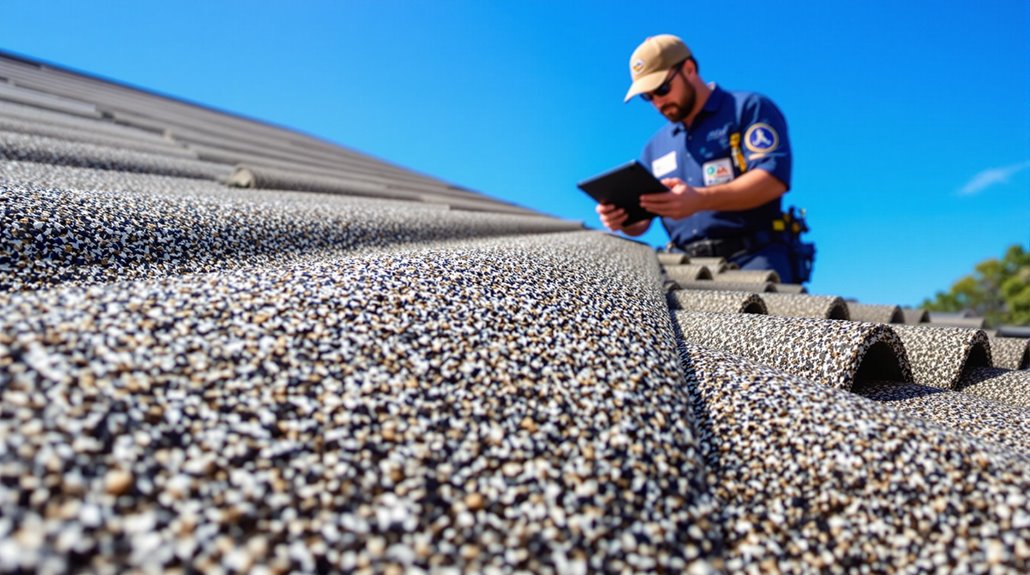
The Public Claims Adjusters Network (PCAN) serves as an independent organization connecting licensed public adjusters who specialize in evaluating roofing damage claims, including those involving rolled roofing systems.
These professionals assess damage patterns, material deterioration, and installation quality to determine appropriate insurance claims valuations.
- Evaluates rolled roofing lifespans of 5-15 years when processing claims
- Assesses damage from weather events, improper installation, and wear
- Reviews maintenance records and inspection documentation
- Considers material quality and installation methods in claim evaluations
- Provides expert documentation of granular coating degradation and structural issues
PCAN members understand the specific limitations and vulnerabilities of rolled roofing systems, enabling them to accurately document deterioration patterns and substantiate insurance claims.
Their expertise helps property owners receive fair compensation for roof damage while accounting for material-specific factors affecting performance and longevity.
Working with PCAN members can increase claim settlements by 20 to 50 percent through their specialized knowledge of insurance policy language and construction codes.
Frequently Asked Questions
Can Rolled Roofing Be Installed Over Existing Shingles?
Installing rolled roofing over existing shingles is not recommended due to installation benefits and existing roof considerations. Professional removal of old shingles is necessary to guarantee proper adhesion and performance.
What Is the Minimum Slope Requirement for Rolled Roofing Installation?
With a slope so critical it can make or break success, installation guidelines specify a minimum slope requirement of 1:12 pitch for rolled roofing, meaning 1-inch vertical rise per 12 horizontal inches.
How Much Does Rolled Roofing Cost Compared to Traditional Shingles?
A cost comparison reveals rolled roofing is initially more economical, with lower material and installation expenses. However, traditional shingles offer better long-term value due to their extended durability and lifespan.
Is Rolled Roofing Fire-Resistant or Does It Require Special Treatment?
While rolled roofing can achieve Class A fire resistance through built-in materials, some types require special treatments or additional layers during installation to meet ASTM E-108 fire safety standards.
Can Rolled Roofing Be Painted to Match Specific House Colors?
Rolled roofing can be painted for color matching, though adhesion challenges exist. Specialized paint types designed for asphalt surfaces are recommended, and proper surface preparation is essential for ideal results.
References
- https://insuredroofs.com/how-long-does-roll-roofing-last/
- https://www.youtube.com/watch?v=p-cmc-2SSPc
- https://www.certifiedinspectors.us/is-roll-roofing-worth-considering-pros-cons-of-roll-roofing
- https://davisroofingohio.com/how-long-does-rolled-roofing-last/
- https://www.thespruce.com/rolled-roofing-1821945
- https://polyglass.us/blog/how-long-does-self-adhered-roofing-last/
- https://heavengables.com/rolled-roofing-a-comprehensive-guide/
- https://www.centralroofingllc.net/how-long-does-roll-roofing-last/
- https://www.certifiedinspectors.us/what-is-roll-roofing-advantages-disadvantages-of-roll-roofing
- https://www.amcoroof.com/glossary/rolled-asphalt-roofing/

